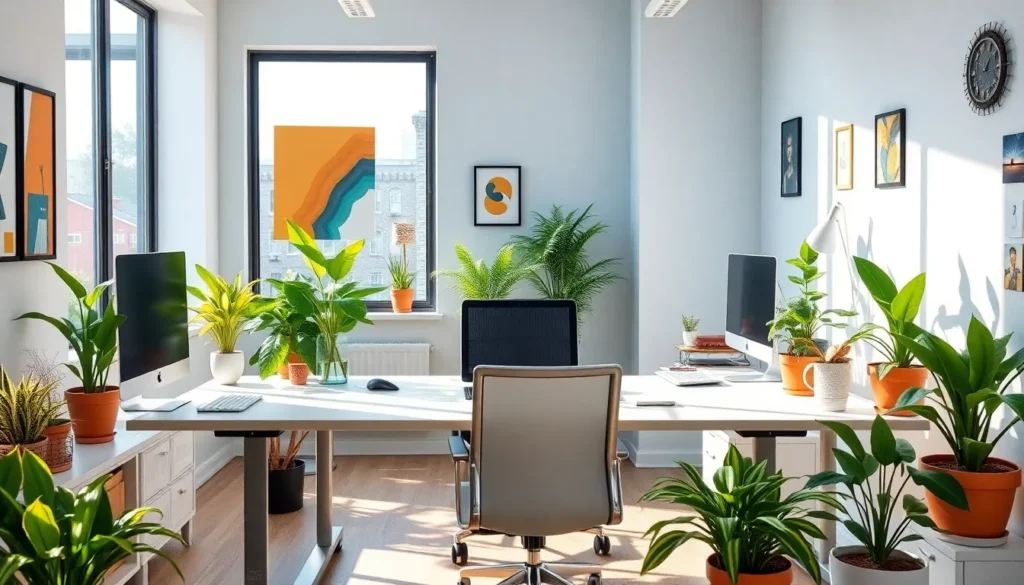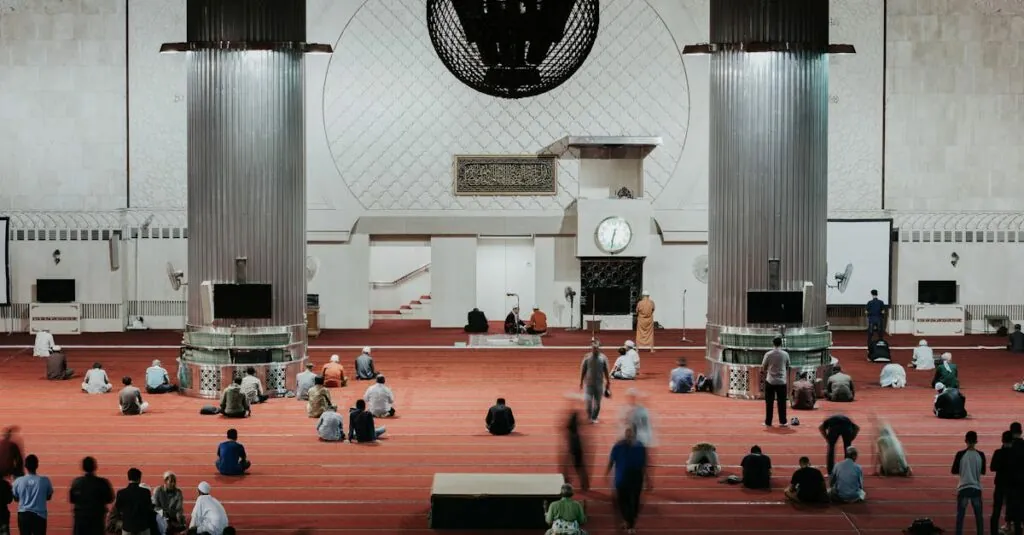Table of Contents
ToggleImagine walking into a room where every piece of furniture, color, and texture sings in perfect harmony. That’s the magic of unity in interior design. It’s like a well-rehearsed choir, where each element plays its part, creating a symphony that makes your space feel inviting and cohesive. Without unity, a room can feel more like a chaotic garage sale than a stylish sanctuary.
Understanding Unity in Interior Design
Unity in interior design refers to the cohesive relationship among elements within a space. Each aspect, including furniture, color, and texture, contributes to an overall atmosphere that feels harmonious.
Definition of Unity
Unity occurs when design elements combine effortlessly to create a singular visual experience. Each component, such as color palettes and furniture styles, works together rather than competing for attention. This synergy fosters a sense of balance and cohesion, essential in crafting inviting environments. Designers often utilize repetition, consistency, and complementary styles to achieve unity, ensuring every element enhances rather than detracts from others.
Importance of Unity
Unity plays a crucial role in shaping the overall aesthetic of a space. A unified design encourages a calming atmosphere, making environments more enjoyable for inhabitants. When elements work together seamlessly, the risk of chaos diminishes significantly. Spaces that lack unity often appear cluttered or disorganized, which can lead to a negative emotional response. Prioritizing unity strengthens the connection between spaces and enhances the functionality of each area, promoting a deeper sense of comfort and belonging.
Types of Unity in Interior Design
Various types of unity exist in interior design, including compositional and thematic unity. Each type contributes uniquely to the establishment of cohesive spaces.
Compositional Unity
Compositional unity focuses on the arrangement and placement of elements within a space. Balance and proportion play vital roles in this aspect. Designers achieve compositional unity through symmetry, asymmetry, or radial patterns. For example, symmetrical layouts create formality, while asymmetrical arrangements lend a more casual vibe. Elements like furniture, fixtures, and artwork must relate spatially to maintain harmony. Effective use of scale and ratio allows each component to complement the other, enhancing the overall visual appeal. A well-composed interior creates fluid transitions between areas, ensuring a unified experience.
Thematic Unity
Thematic unity centers around a consistent theme or concept throughout a space. Designers select color schemes, materials, and styles that reinforce this theme. For instance, a coastal theme might incorporate light blues, sandy tones, and natural textures. Every choice reflects the overarching concept, creating a cohesive narrative. Utilizing specific motifs or patterns enhances thematic unity, drawing attention to key elements while maintaining visual interest. By intertwining various aspects of design within a specific framework, a space feels intentional and inviting. This approach promotes a sense of purpose, guiding feelings of connection and comfort.
Principles of Achieving Unity
Achieving unity in interior design involves careful consideration of various elements that work together seamlessly. This section outlines key principles for establishing a harmonious space.
Color Coordination
Color coordination plays a vital role in unifying a space. Designers often select colors that complement one another, creating a cohesive look. Shades of a single color, known as monochromatic schemes, can enhance unity by providing depth without overwhelming the senses. Additionally, utilizing analogous colors can build a soothing environment, as they sit next to each other on the color wheel. Incorporating accents through complementary colors adds visual interest while maintaining overall harmony. By strategically applying these principles, spaces become more inviting and visually appealing.
Consistent Materials
Utilizing consistent materials contributes significantly to unity in design. Choosing a limited range of materials ensures visual continuity throughout the space. Wood finishes, fabrics, and metals should harmonize with each other to create a cohesive feel. For instance, choosing warm wood tones can establish warmth, while sleek metals can impart a modern touch. Repeating materials in different forms across the space builds a sense of connection and flow. Consistency nurtures an environment that feels intentional and thoughtful, resulting in a well-rounded aesthetic.
Benefits of Unity in Interior Design
Unity in interior design brings numerous benefits that significantly enhance living environments. Harmonious relationships between design elements foster a coherent atmosphere that can transform spaces.
Enhanced Aesthetic Appeal
A unified design elevates visual appeal, creating an inviting atmosphere. Color consistency among walls, furniture, and accessories enhances overall beauty. Cohesive patterns and textures contribute to an elegant look, attracting attention without overwhelming the senses. A well-planned design presents a polished appearance, making a lasting impression on guests. Thoughtful selections of colors, materials, and fixtures establish a distinctive style while ensuring all elements complement one another. As a result, unity allows for a seamless flow that enhances the attractiveness of a space.
Improved Space Functionality
Functionality increases in well-designed, cohesive spaces. Thoughtful arrangement helps define areas for specific activities, ensuring smooth transitions from one space to another. Accessible layouts promote ease of movement, making daily tasks more efficient. Consistency in design elements, such as finishes and furnishings, reinforces functional relationships among various components. Unifying a space can also minimize clutter, creating an organized environment that encourages productivity. Ultimately, a focus on unity supports both aesthetic and practical aspects, promoting a comfortable living experience.
Unity in interior design is essential for creating inviting and harmonious spaces. By carefully coordinating colors, materials, and arrangements, designers can foster an atmosphere that enhances both aesthetics and functionality. A unified design not only captivates the eye but also promotes a sense of comfort and belonging.
When every element works together seamlessly, it transforms a space into a cohesive narrative that resonates with its inhabitants. Embracing the principles of unity allows for a more intentional approach to design, leading to environments that are not only beautiful but also practical. Ultimately, unity enriches the overall experience of a space, making it a true reflection of its purpose and character.







